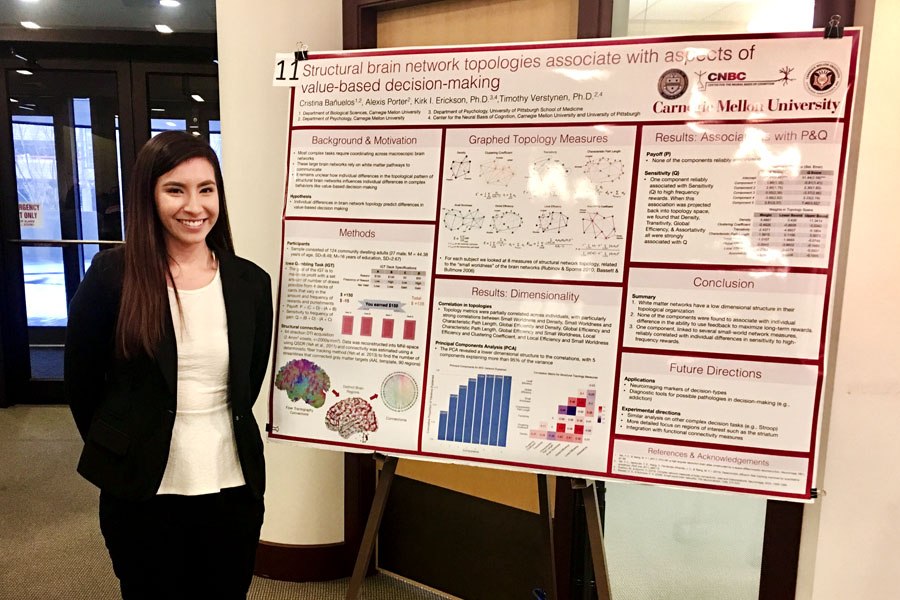
Biological Sciences Senior Presents at Two Major Neuroscience Conferences
Biological sciences senior and Andrew Carnegie Society Scholar Cristina Bañuelos recently presented her research at two major neuroscience conferences.
In February, Bañuelos presented her work at the NEURON Conference in Connecticut with the help of a travel award from Carnegie Mellon University’s Nu Rho Psi Honor Society chapter. It was her first time presenting at a major conference.
“I was so excited about being able to present my work at a conference, but I did not expect how much I would be left wanting to do it again. I immediately knew I wanted to keep sharing my work with others,” Bañuelos said.
This month, Bañuelos did just that when she attended the Cognitive Neuroscience Society’s annual meeting in San Francisco, March 23-26.
At both events, Bañuelos was accepted to give a poster presentation on her honors thesis project, which she has been working on through the Cognitive Axon Lab led by Associate Professor of Psychology Timothy Verstynen. Her research focuses on understanding how individual differences in the physical wiring of the human brain give rise to complex decisions that rely on learning from feedback.
Using a MRI technique known as diffusion weighted imaging, Bañuelos is able to map the structural connectivity of the human brain. “Much like the water flowing within a hose in your front yard, the water flowing within an axon of a neuron can only diffuse along its length, allowing us to visualize the “tubes” that connect brain areas together,” she said. This enables her to examine the structural organization of macroscopic brain networks, and ultimately, understand how individual differences in the structural connectivity might be able to predict differences in value-based decision making.
Getting her work out into the academic community was an incredible experience for Bañuelos. “At these conferences, it was the first time I felt like I was being seen as a serious researcher, and I loved the opportunity to meet others who were genuinely interested in my work and wanted to learn the methodology used and apply it to their own research. I felt as though I was truly contributing to the field and offering others a new understanding of how graph theoretic topology measures can be applied to structural brain networks,” she said.
Interacting with other scientists is also a great way to hear feedback and further new directions and analyses for her work, she added.